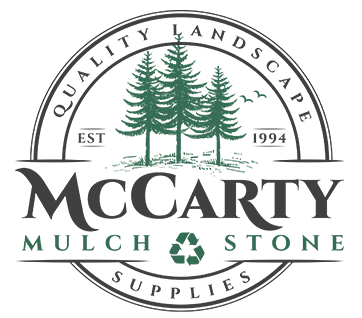6 Essential Late Summer Landscaping Tips
How to Maintain Late Summer Landscaping
Is your lawn prepared for the heat of the summer? As the late summer approaches, you’ll need to take great care of your landscape. Intense heat and strong rays from the sun can place your grass and garden areas under stress.
Late summer landscaping is the ideal time to start paying attention to your lawn and all its components more closely. You’ll also want to prepare it for the colder months to come. Your lawn has a few more weeks left of summer and during those weeks, there are a few summer landscaping tips that you should keep in mind.
In the guide below, there are several landscaping tasks that you should complete before the summer’s over. Continue reading to get started!
1. Start Mulching
If you have flowerbeds as a part of your landscaping, then you’ll want to start mulching. Simply add a layer of fresh mulch into your flower beds to boost water retention. The mulch will hold moisture to prevent dehydration during the hottest months of the year.
Mulch will also help prevent weeds from growing around your flowers and will maintain soil temperatures throughout the entire year. There are also many different types of mulch to choose from. Take the time to find a mulch that compliments your landscaping.
You don’t need a thick layer of mulch. A layer that’s half an inch in thickness will be good enough for your flower beds and will instantly boost your curb appeal!
2. Remove Weeds
If you don’t currently have mulch in your flowerbeds, then you might already be experiencing weed growth. Weeds can also sprout up around other areas of your landscaping as well. While preparing your landscape, it’s important to start removing any weeds you might find.
It’s common for weeds to sprout up during spring and summer. Typically weed seed is deposited in flower beds by wind, birds and animals or lawn mowers. Adding too thin of a layer of mulch can actually promote those weeds to germinate in your flower beds. It’s important to catch the weeds and remove them as fast as possible to prevent them from spreading. If weeds aren’t removed, then they’ll most likely stay in your landscape for the entire year.
When you do spot a weed or two, be sure to use your hands and uproot it. Uprooting the entire weed will remove it from your lawn. If you mow over the weed or only cut the top of it off, it’ll quickly grow back.
Pulling the weeds out by hand can also bring better results than using chemicals. Take the time to walk through your lawn three days a week and pull any weeds you see.
 3. Fertilize Grass
3. Fertilize Grass
Another important summer landscaping tip to help you prepare for fall landscaping is to fertilize. Grass can sometimes enter a dormant state during late summer. Because of this, your grass will need extra attention during the fall and winter months.
In some situations, fertilizer can improve the condition of your grass and give it the boost it needs before fall and winter come. The type of fertilizer you use on your lawn is something you want to consider. The condition of your grass and your location are a few factors that affect the type of fertilizer that’s needed.
Here locally we recommend Endure lawn fertilizer Summer Application: 24-0-3 that contains 40% UMAXX, Regain® stabilized nitrogen • 1% Iron plus micronutrients, 25% Ammonium Sulfate, up to 12 weeks of greenup. Or an 18-0-3 with insect and grub control. 100% Regain® stabilized nitrogen, season long preventive & curative grub and surface insect control, including ticks • 0.2% Imidacloprid, .04% Lambda Cyhalot
You can speak with your local nursery about the best fertilizer to use on your lawn for your lawn’s specific needs.
4. Water Often
Late summer calls for high heat. Now, more than ever, you’ll want to water your landscape regularly. Make sure to water all aspects of your landscape including the gardens, flowerbeds, lawn, and any outdoor plants you may have.
The best time to water your landscape is during the early morning or late evening. There are a few reasons for this. In the early morning, your landscape has time to absorb the water before the sun rises, gets to its highest point, and dries up the water.
Watering in the afternoon could prevent your landscape from getting all of the water it needs because the sun will dry the water quickly. Watering at night can cause any excess water to sit on your landscape for several hours, which may promote the growth of bacterial diseases and fungus.
5. Mow Higher
Now is also the best time to check the height of your lawnmower and make the appropriate adjustments. For late summer, it’s ideal to raise the blade on the lawnmower about one inch. During this time, if you cut the grass too short, then it can cause a negative reaction.
Ultimately it can cause stress on your landscape and even create brown patches in the lawn. Raising the blade by one inch will promote healthy grass growth even throughout fall.
6. Conduct Inspections
Another important aspect to keep in mind during the late summer is the possibility of pests and disease. While inspecting your landscape for weeds, you can also inspect it for pests and signs of disease. White powder on plants could be a sign of a fungus.
White cotton-like growth could indicate a pest. Although pests and diseases can both be treated, it’s important to catch them in the early stages.
This Is Late Summer Landscaping Done Right
As the end of summer is near, it’s time to start discovering some of the best late summer landscaping tips. When you’re feeling stuck and unsure how to properly care for your entire landscape during the end of summer, be sure to revisit this guide, and don’t forget your mulch!
At McCarty Mulch and Stone, we produce and manufacture the highest-quality materials to ensure your landscape is both beautiful and healthy. We offer a wide range of mulch, stone, soils, pine straw, and more! Shop today to see how we can improve your landscape today.




